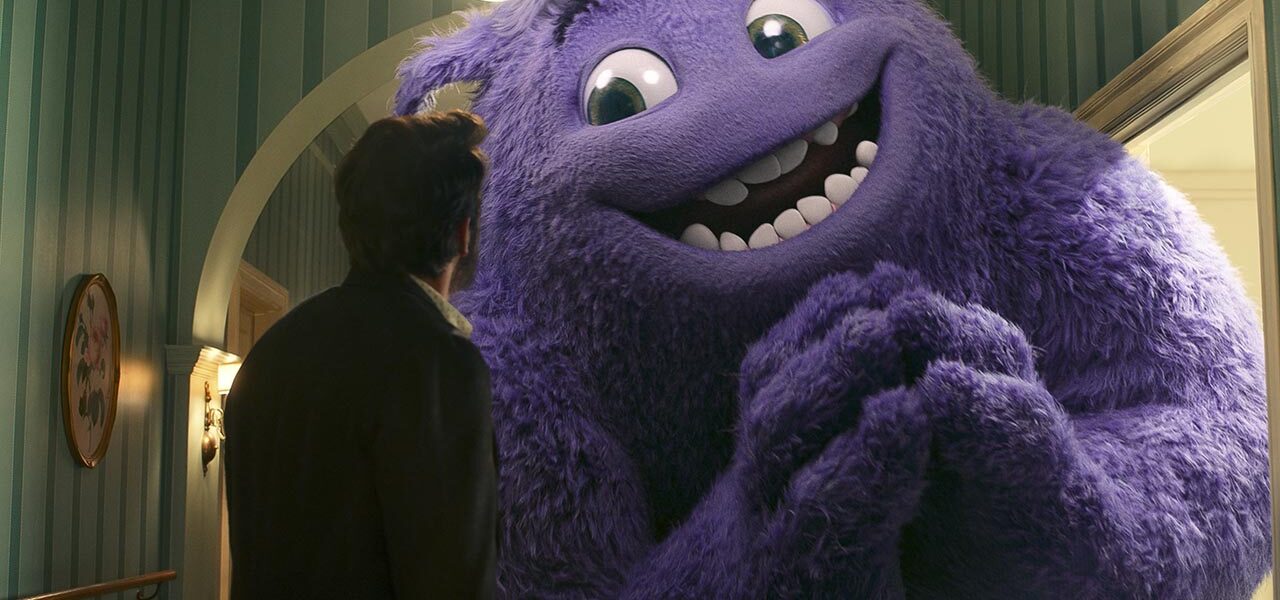
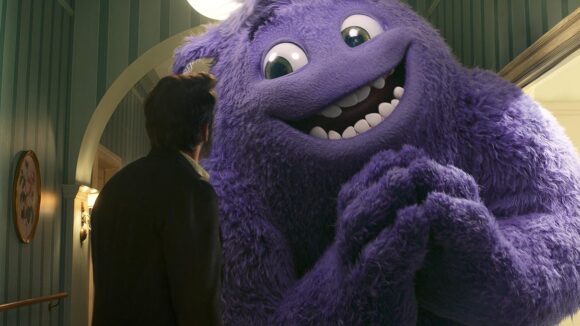
How Framestore’s VFX And Animation Supervisors Collaborated To Create The Tangible World Of ‘IF’
In October 2019, the media announced two of Hollywood’s most amiable leading men, actor and filmmaker John Krasinski and superstar Ryan Reynolds, were joining forces to create an ambitious fantasy feature. Now, more than three years later, Paramount Pictures has released the film as IF – uppercase acronym for ‘Imaginary Friends’ – featuring more than 40 fanciful creatures animated at Framestore.
The ‘IF’s appear to Bea (Cailey Fleming), a lonely little girl whose ailing and recently widowed father (Krasinski) places her in the care of her slightly dotty grandmother (Fiona Shaw) in a grand Bay Area Victorian apartment. There, in the attic, Bea encounters Cal (Reynolds), a befuddled man living with an insecure purple yeti named Blue (Steve Carell) and a sassy Betty-Boop-like living doll named Blossom (Phoebe Waller-Bridge).
Displaced from their former child creators, IFs will either fade away or seek new placements via a wizened teddy bear named Lewis (Louis Gossett Jr.) who oversees a retirement home for childhood figments. IFs include a lovesick unicorn named Uni (Emily Blunt), an overdramatic spy named Cosmo (Christopher Meloni), a macho spaceman (George Clooney), a timorous ice cube (Bradley Cooper), a perky sunflower (Matt Damon), a cranky robot (Jon Stewart), and (rumor has it) Brad Pitt.
Visual effects supervisor Chris Lawrence and animation supervisor Arslan Elver – the Oscar- and Annie-nominated team of Framestore’s Christopher Robin – joined Cartoon Brew recently to discuss the creation of the wild menagerie of imaginary beings, in collaboration with writer/director John Krasinski and his team.
Cartoon Brew: Did you have a hierarchy of IFs?
Chris Lawrence: Yes, Blue and Blossom were the main lead characters, closely followed by Lewis and Cosmo. That was our hero group. We had more than 40 characters, not including variations for the crowd, and each of those was very different to develop. I’ve never had to work on such a diverse cast of animated characters.
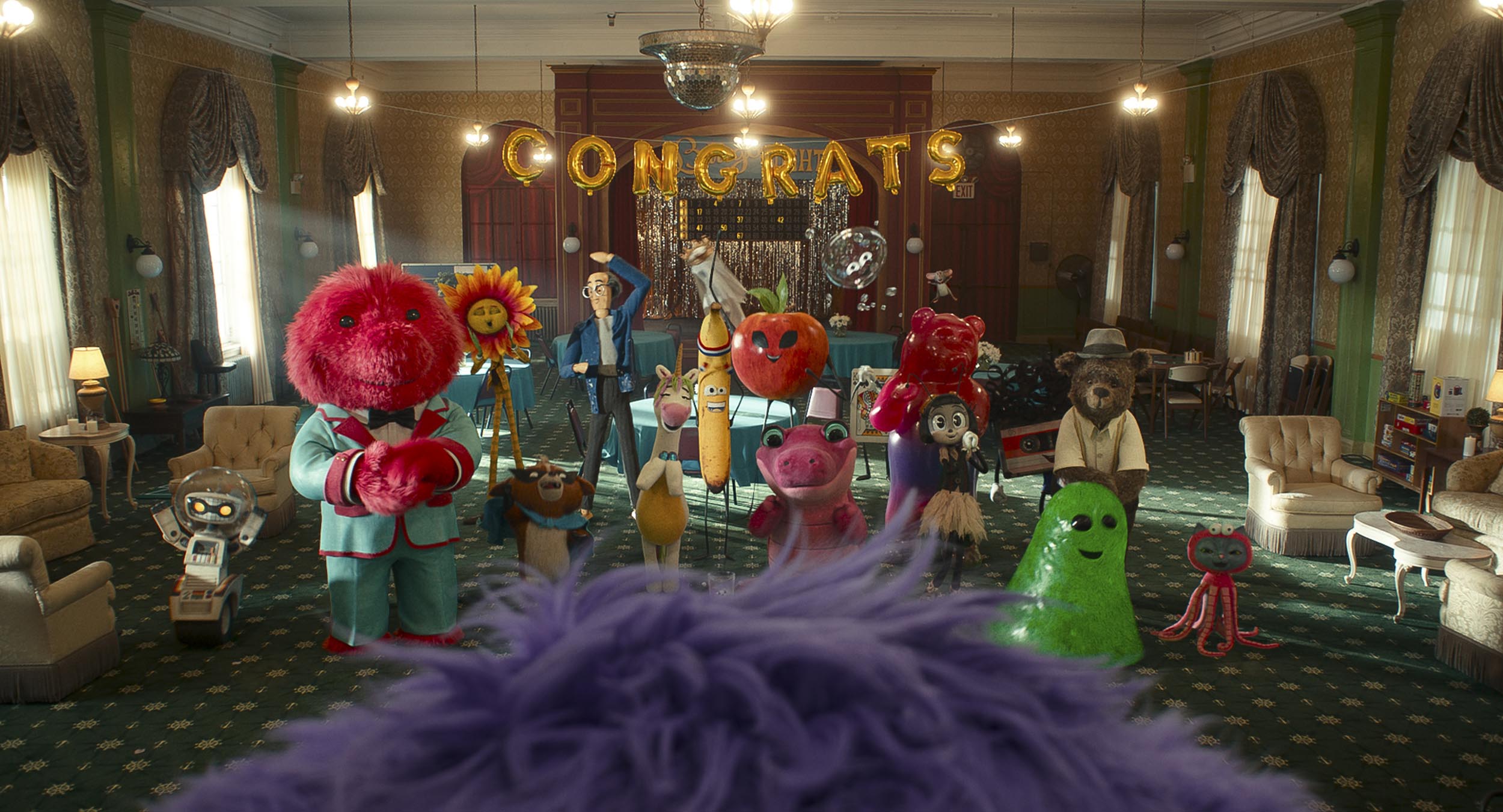
The IFs are integrated very convincingly with Janusz Kaminski’s cinematography – how did you create their very tactile presence?
Lawrence: Planning how to film a scene, letting the on-set crew know where the characters are going to be, figuring out how to puppeteer for eyelines – that’s all very much a part of the process. Live-action filmmaking is a very difficult environment to control. Everything happens so quickly and in the moment. And so, there we put a lot of a lot of legwork went into that [preparation].
And then, Framestore did an incredible job with their craft of rendering, which has developed even since we did Christopher Robin. We now have new rendering technology and the way it responds to light is now incredibly optimized. Not to mention the brilliant compositing and creature effects that did all of our cloth and fur simulations. Instead of simulating guide curves, we’re now simulating every hair on a character with 15 million hairs. All of those details led to that tactile, tangible quality that John [Krasinski] was after.
What were the key ingredients for animation?
Arslan Elver: In the first meeting we had with John, the keyword was ‘tangibility.’ He wanted these characters to feel they belonged to their world. To me, the biggest challenge was making the characters unique so when you see each of them for a brief moment, you understand their personalities. But also, they needed to feel ‘true’ – whatever the emotion, or the moment they’re experiencing, it had to connect with the audience. We always do walk cycles and tests to get a character’s personality. But for every character, clarity was important. For instance, when in Blue’s first scene, he’s hiding, trying to be quiet, [which conveys] his naive character. In the first scene with Blossom, she’s very comfortable with Bea, ‘Oh, let me help you.’ With Lewis, he looks to Bea with this slow ‘all-knowing’ turn the very first time she meets him. Those key scenes, the first time you see the characters, were important.
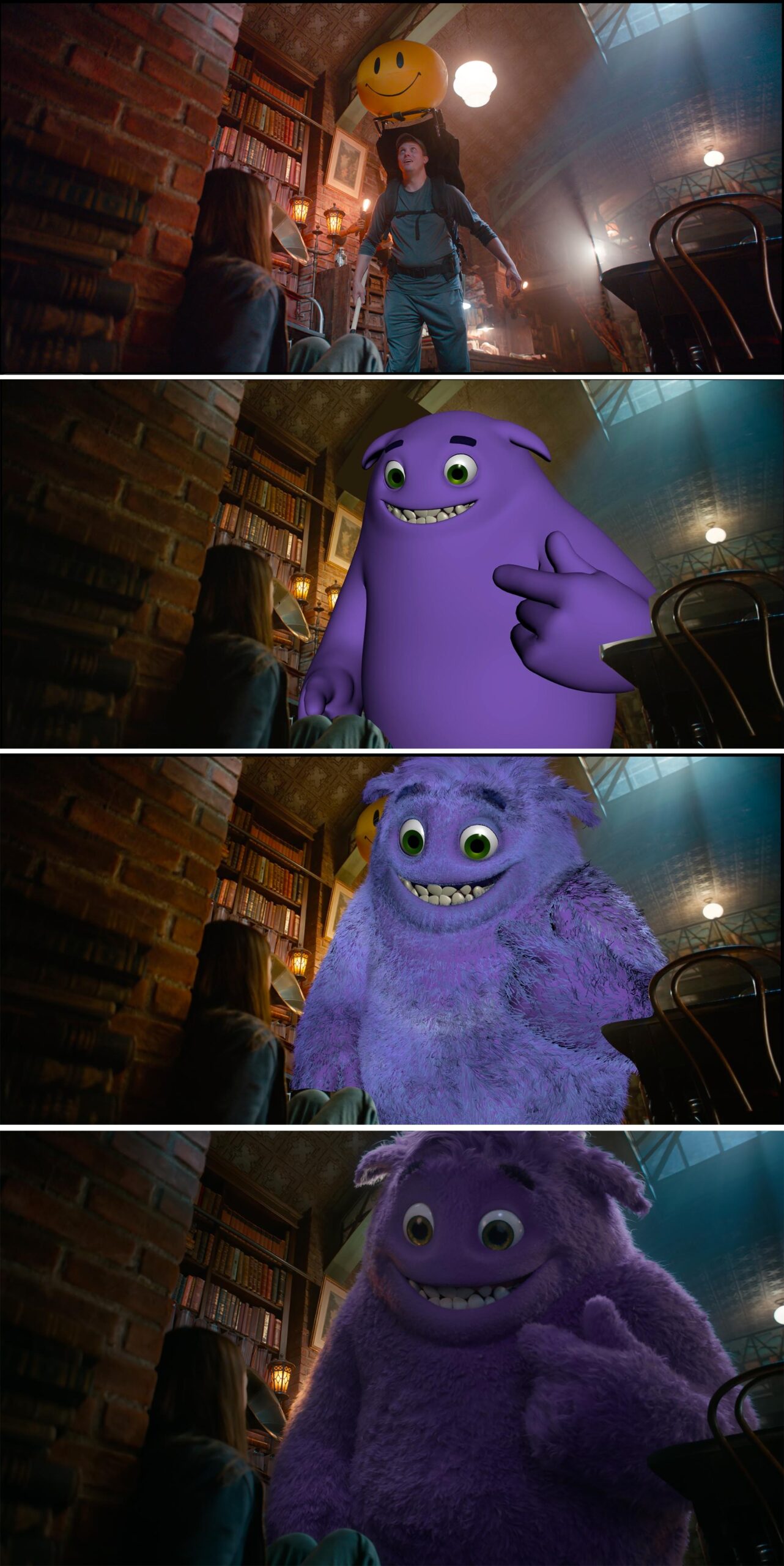
How did the vocal performances inform those moments?
Elver: For each character, we studied different aspects, and some of them were more tricky than others. Building Blue was a bit easier because we had Steve [Carell]’s beautiful voiceover – he’s this big, huggable character, very childlike, without a filter, so he has all these intricate moments of honesty. Blossom was trickier because she was based on a design from a 2d Betty Boop era. Getting her into a 3d world was quite a challenge in terms of making sure she looked appealing from different angles. We had rigging tools that allowed us to shape and sculpt her face if we needed to make it more appealing from a particular angle. But performance-wise, it came together when John did his voice recording session with Phoebe [Waller-Bridge]. And we looked at [Phoebe’s TV series] Fleabag and we picked some of the interesting idiosyncrasies from Phoebe’s acting, and brought that into Blossom’s sassy performance. For almost every character, there was a ‘eureka’ moment.
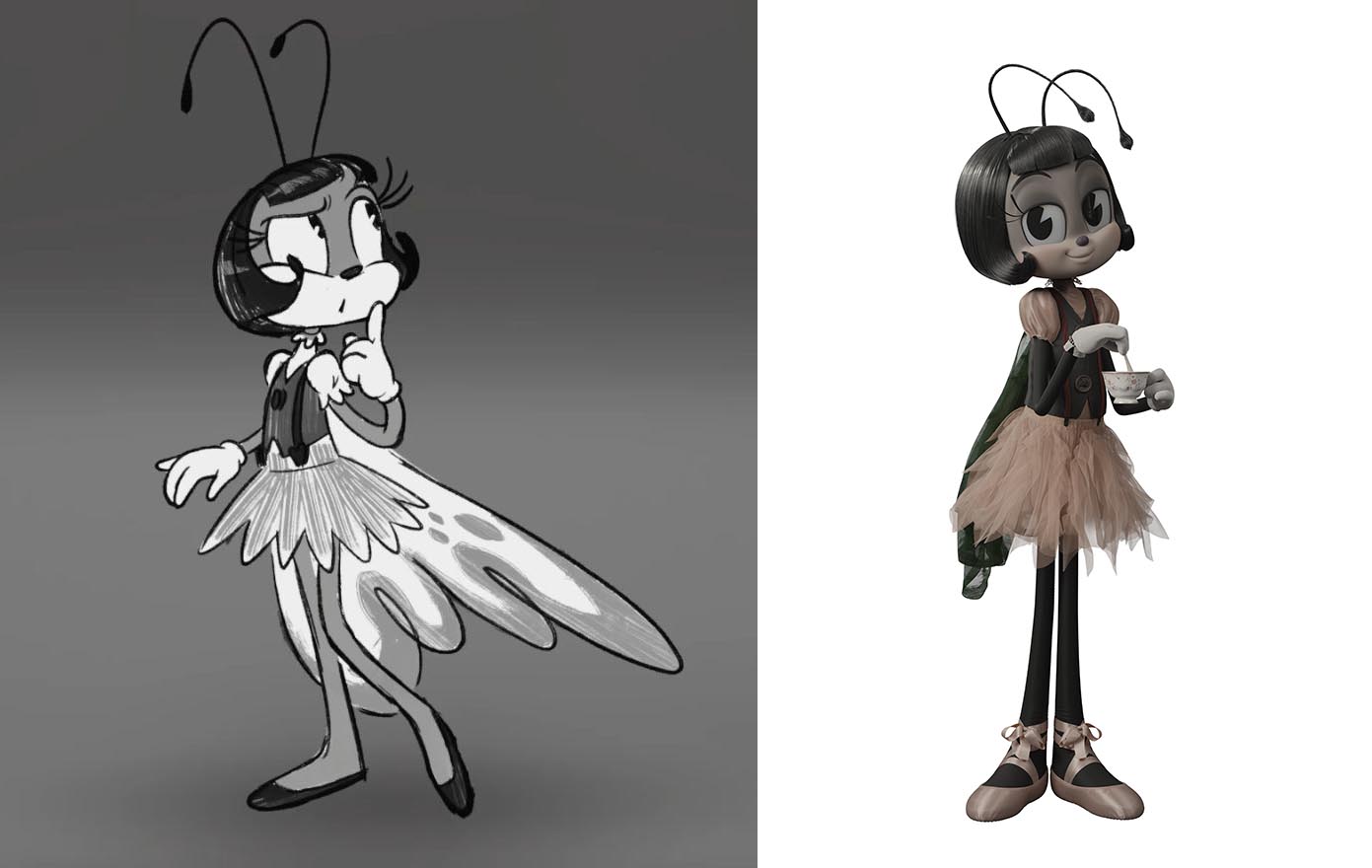
How did you translate those acting cues to the set?
Lawrence: Arslan has an incredible superpower in terms of his ability to be able to become all these characters and mimic them. He also has this incredible memory. I’d see him in a conversation with John Krasinski, where John would demonstrate a performance – Arslan applied that to memory and he’d act it out ten times in slightly different nuanced ways to work the scene.
Were you both on set at all times?
Lawrence: Yes, we were. This was a hybrid of live action and animation. I didn’t feel it was appropriate to have any hierarchy between vfx and animation supervisors; Arslan was an equal partner. He was there from the beginning of the shoot, working with the puppeteers and the stand-ins that we had playing the characters, helping visualize [scenes]. We had a very important visualization process that was quite ad hoc, but for our work and the movie, it was very important.
How did those on-set previz systems help animation?
Elver: Chris showed me how to connect to Framestore’s system on set. I could LIDAR the set with my iPhone, pick still images from the QTAKE while they were shooting, bring those together, and roughly eyeball poses. I didn’t track the whole scene, but I’d take key moments, place the character, and pose the character right there on set.
But what that did was two important things. One, I was able to test [animation] rigs on the fly, on set, while Framestore was building [characters] in London and Montreal, and get feedback. The second thing was I could immediately warn Chris if we’d need to ‘cheat’ an angle. For example, when John was puppeteering Cosmo [the spy] jumping on Ryan [Reynolds], I took a couple of frames, posed the character, and showed that to John on my iPad. That gave him and Ryan new ideas. Ryan suggested, ‘Maybe I can put Cosmo’s head into his mouth?’ And he came up with a gag, ‘Oh, I can taste it.’ That gag came from us testing and posing the characters and showing them to John. And because we were working in the Framestore pipeline, that became a starting point for postviz.
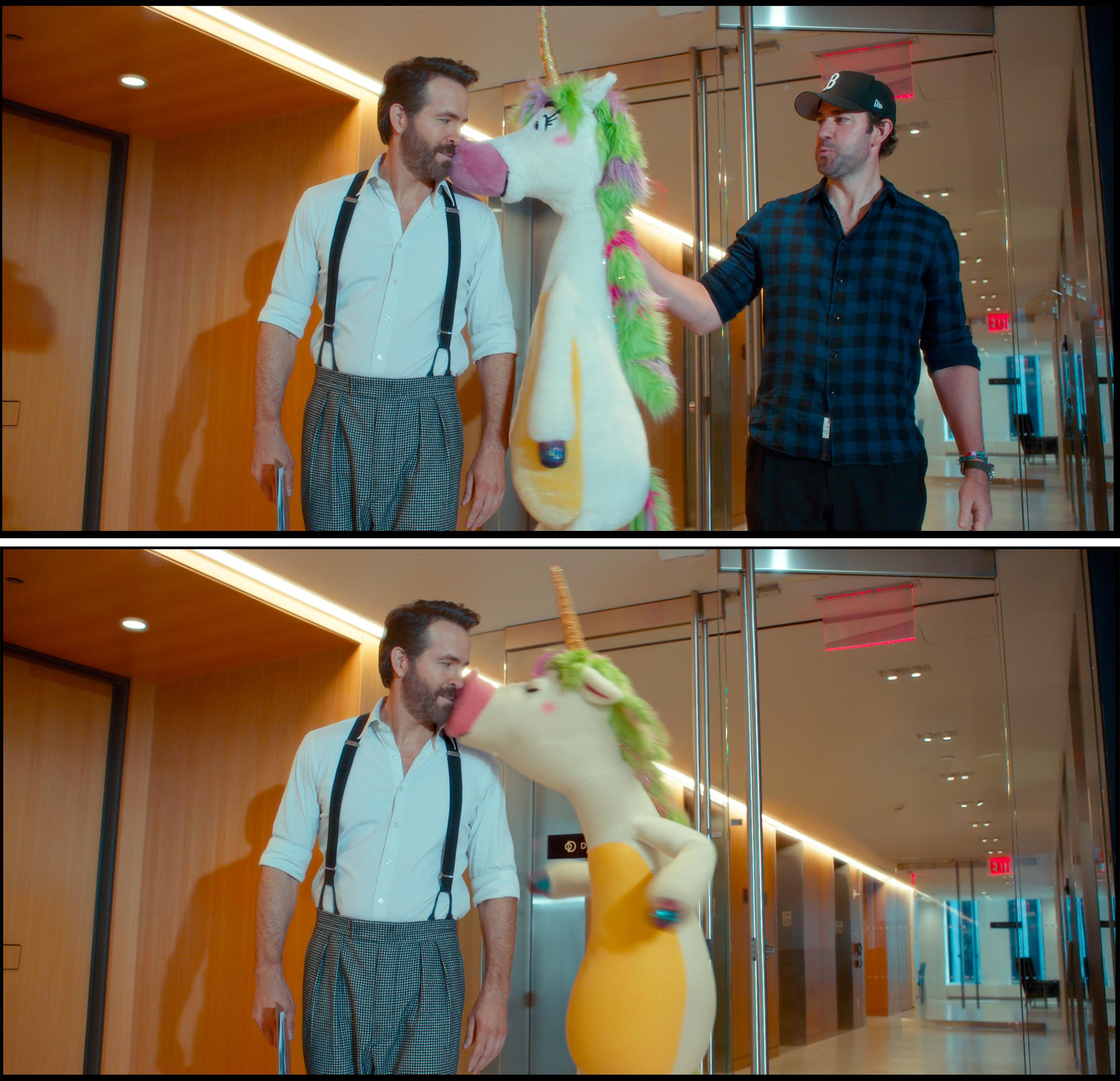
How did you work with Puppet Kitchen’s character puppets?
Lawrence: Eric Wright, Katrina Denney, Spencer Lott, and Grace Townley at Puppet Kitchen did a fantastic job of making physical proxies of some of the IFs. With so many characters to build, it wasn’t possible to build every IF to a photo-finished quality. But what they were able to do was bring a reality [to set]. For example, Uni [the unicorn] was a sketch that they built as a huge, full-scale plush toy. Framestore then detailed-matched Uni as a cg character. Having those puppets on set allowed the cast and crew to see all the IFs. We ended up with an amazing overworked visual effect production team who looked after a truck full of stuffies, and sometimes we had scenes with 15 of them on [set]. Eric became the puppeteer and stand-in for Blue, and he would sometimes wear a Blue costume, with an eyeline [marker] above his head.
How did you simulate Blue’s massive bulk on set?
Elver: Blue was so big in terms of his girth, we wondered how were we going make sure that the cast and crew understood [that] on the set. Someone came up with the idea of a hula hoop. And so, Eric, as well as wearing the eyeline marker above his head, wore a hula hoop that gave us the character’s width. That was very helpful because you can easily forget on the day how big Blue is.
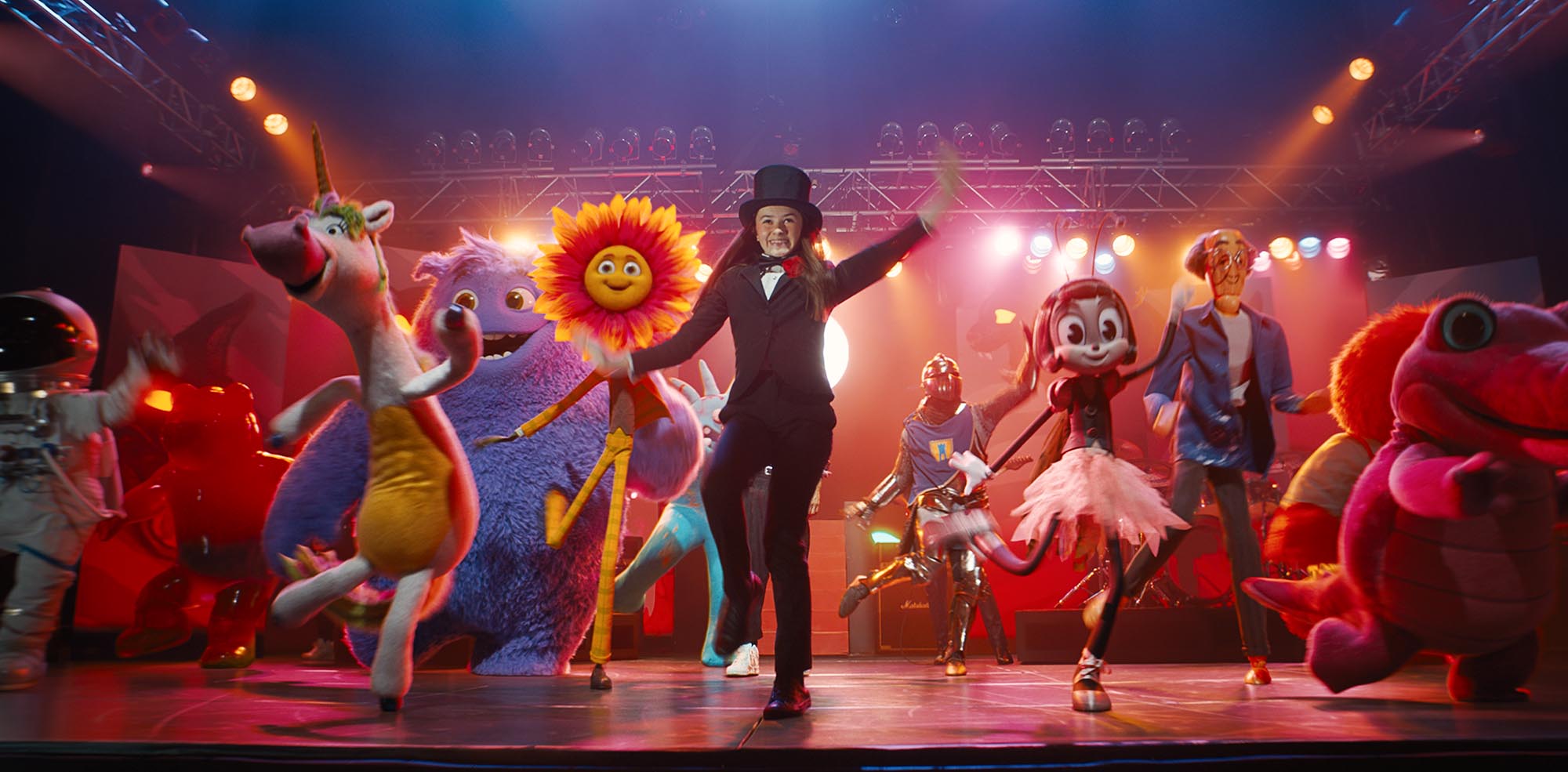
At one point, Bea joins the IFs in a huge Busby-Berkeley-style dance routine – how did you choreograph those interactions with the puppet crew on set?
Lawrence: The choreographer Mandy Moore [La La Land] and assistant choreographer Al Blackstone brought in around a dozen dancers. They cast dancers of different sizes to play the different IFs, and they choreographed the whole thing. We could have previz’d that to the nth degree, planned every shot, and shot individual dancers, but that would be very limiting. They wanted to run the dance from top to bottom to keep the energy and the dynamics in one long take. So, we did that. We had all the dancers there, and it was by far our most complicated work for vfx. We cleaned up every shot, replaced the floor, added reflections, and matched the lighting – and it was all shot handheld, or Steadicam, with no motion control, no clean plates.
Elver: From an animation point of view, that was a fantastic starting point. Some of the shots are one-to-one matches to the dancers. Some evolved with John’s vision and creativity, and we made some changes. But it was a fantastic solution because it was a very heavy scene to do with so many characters done by keyframe animation.
By contrast, there are some introspective scenes with Lewis counseling Bea seated by the sea at sunset. How did you make Lewis such a soulful guy?
Lawrence: For me, that was one of the most beautiful scenes in the movie. And it was one of the last scenes to turn over. It was so well written, and a perfect coming together of all of the elements from Louis Gossett Jr.’s voice performance, the animation, and the beautiful setting of the sunset on the beach in Coney Island. From my perspective, that slotted together very quickly because, by that time, we had become adept at making the shots.
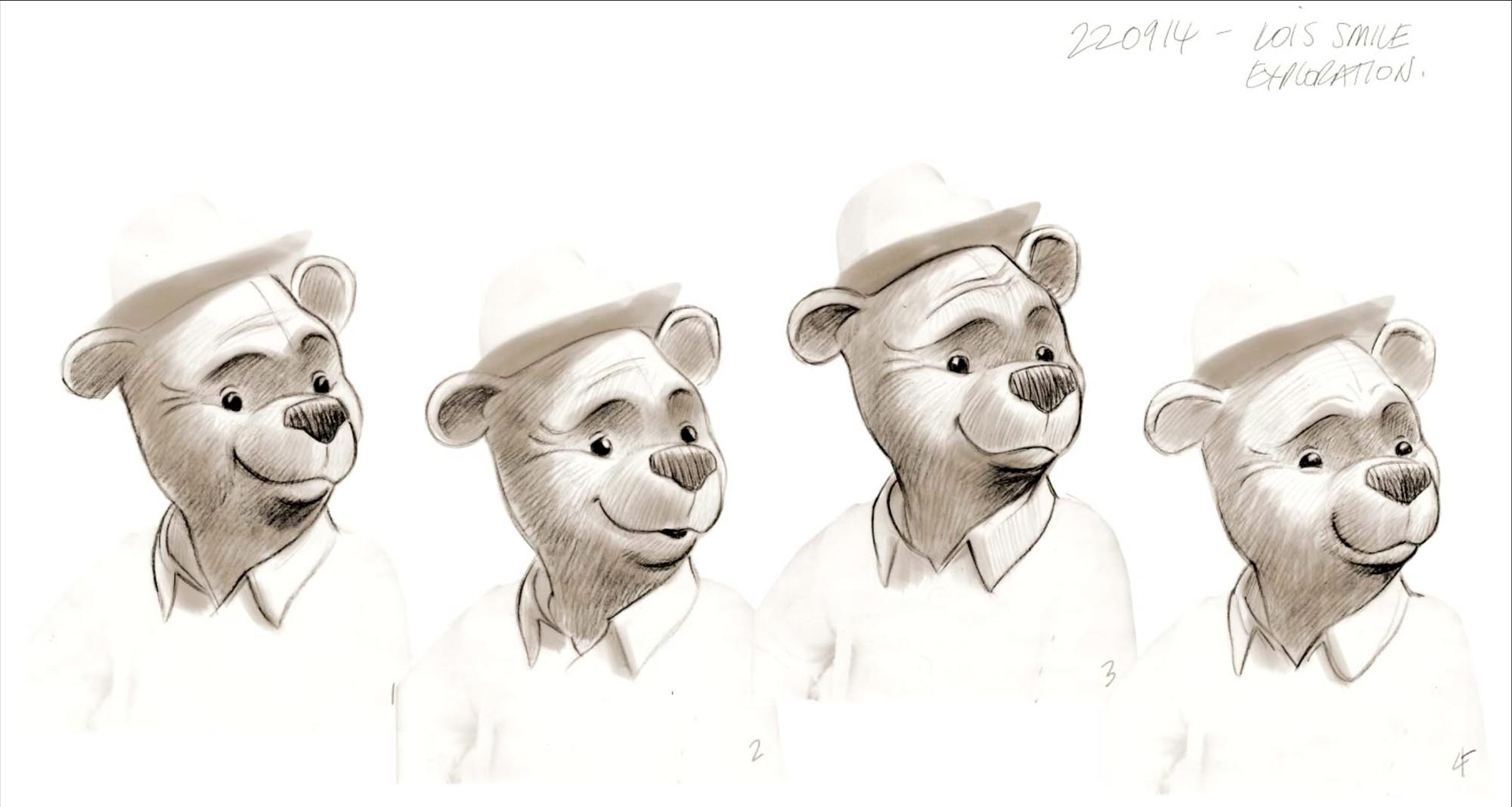
Elver: From an animation perspective, I remember when I met with John and Chris in their office in New York, there were all these drawings, character designs, and photos of the performers’ faces. Louis Gossett Jr.’s photo had a smiling face with lots of wrinkles. It reminded me of my grandmother, who passed away years ago – it was a very sweet and genuine smile. John wanted to capture that and the highlights in Lewis’ eyes. That was our starting point.
Performance-wise, we started Lewis’ animation in the scene when he first meets Bea. That allowed us to build his character, so by the time that bench scene came around we knew what we were doing. John was very encouraging in allowing us to take more ‘breathing’ time. Often, when you work with a director, they might ask you to match line readings exactly. But John has such a good understanding of acting, he would often ask for more gaps between words, to help us feel the moment.
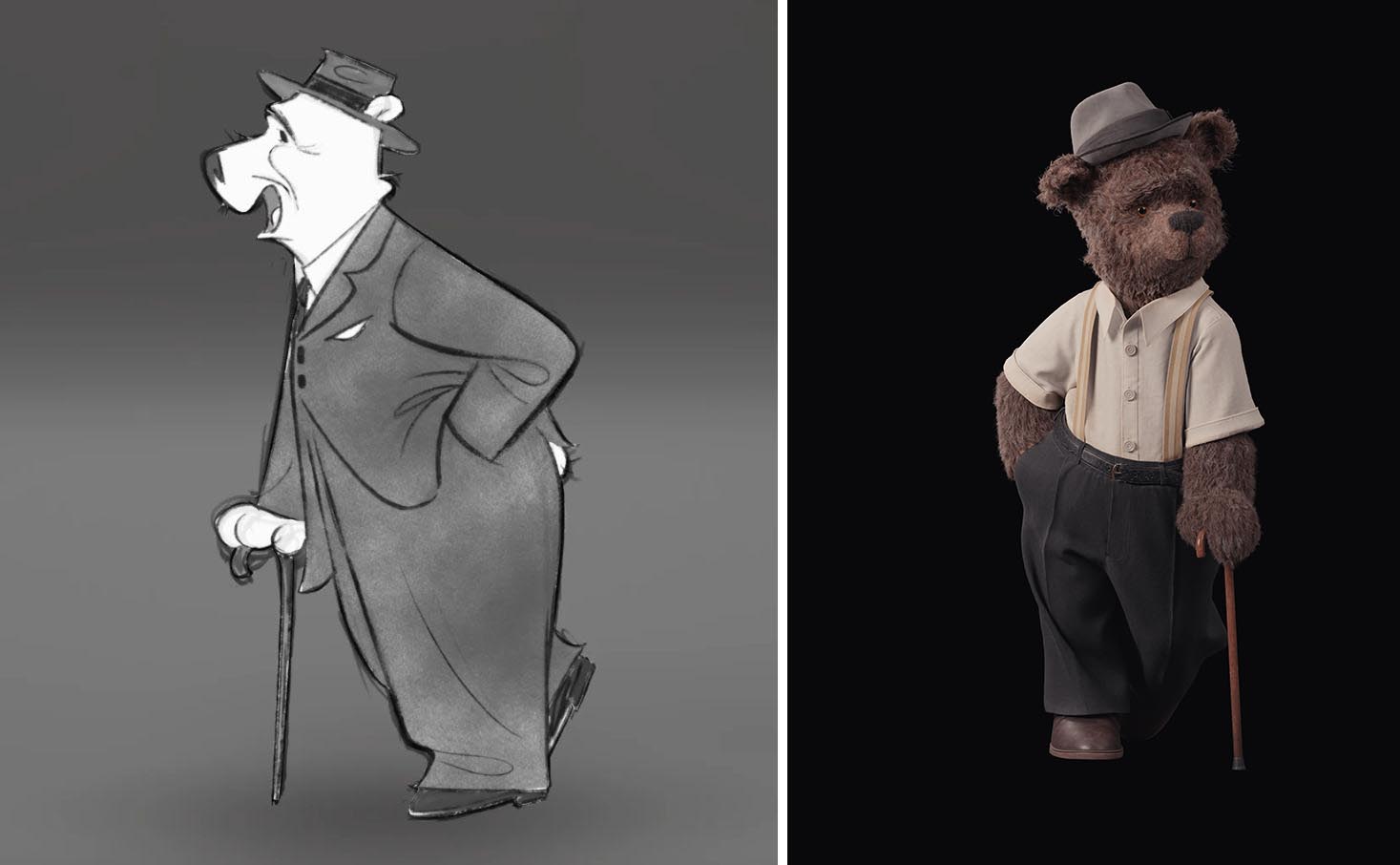
It’s a lovely scene because, although the film is set in present day, it feels like it hovers over reality in a timeless way – what was the key element for that?
Lawrence: There’s something incredibly nuanced about animated performances in live-action filmmaking. You have to use great subtlety and nuance. If we’d taken it too far, it could have become cartoony, but these characters were appealing. I have four- and eight-year-old children, and when they saw the film, they were on the edge of their seats. That was such an enjoyable outcome after two years of hard work. Tangibility was important, but none of that would have worked if the characters weren’t authentic.

.png)